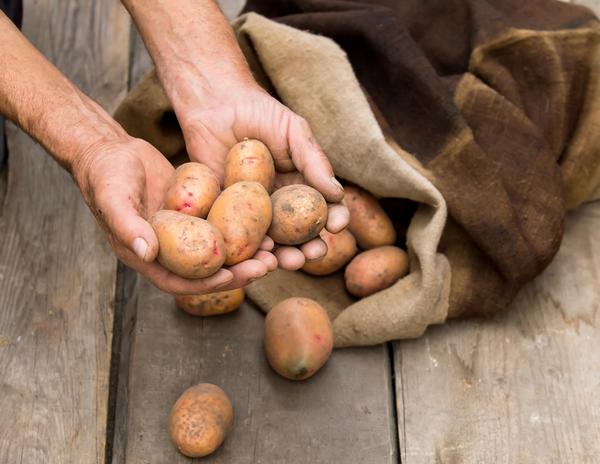 It’s good when you managed to grow and harvest a good potato crop. But in order to keep this crop intact for a long time, it is important to know the secrets and rules for the proper storage of potatoes under various conditions.
It’s good when you managed to grow and harvest a good potato crop. But in order to keep this crop intact for a long time, it is important to know the secrets and rules for the proper storage of potatoes under various conditions.
Content
How to store potatoes at home
Potato is a very popular vegetable. However, it is quite finicky not only during the growing period, but also during its storage. For proper storage of potatoes you need:
- timely harvest;
- stand 4-7 days in a dark place to dry the tubers before laying for long-term storage.
Before storing the tubers for storage, it is necessary to sort out, damaged ones will not be stored for a long time, and can ruin the rest of the crop. It should also be noted that not all varieties of potatoes are stored equally long.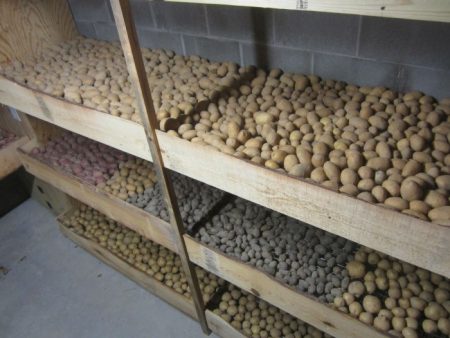
Timing
The shelf life of potatoes depends not only on storage conditions, but also on the selected variety. Early ripe varieties of potatoes are stored only until November, then they begin to sprout and wilt. For long-term storage, only mid-ripening and late ripening varieties are suitable. They lie well until the summer.
Storage conditions
Important conditions for the conservation of tubers are:
- correct temperature conditions;
- optimal humidity;
- lack of access to light;
- the right neighborhood;
- control of tubers during storage.
Humidity
An important condition is humidity. The optimum humidity is approximately 80-90%. High humidity in the absence of ventilation provokes rotting of potatoes.
Potato storage temperature at different times of the year
The main question is what temperature to provide tubers. The optimum temperature for potatoes is from +2 to +4 degrees. Withstands potatoes temperature and lower. But when the temperature drops to 0 or lower, the potato is supercooled and even freezes. The quality of tubers is reduced, the likelihood of disease of the future crop increases. When rising above 4 degrees, the potato begins to sprout.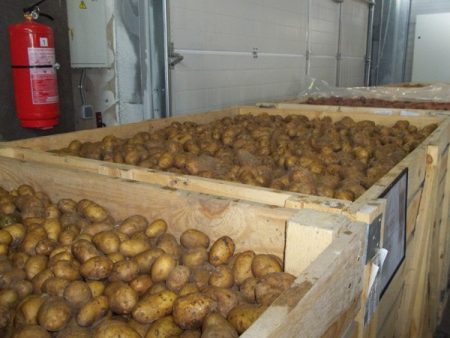
Illumination
When light enters the potato, it begins to sprout actively. In addition, the tubers turn green and become unusable. Therefore, you need to store potatoes in the most protected place from light.
Where to store potatoes?
The way you save potatoes at home depends on the options available. The best way to preserve the crop is the cellar, where it is possible to provide optimal storage conditions. If you need to save potatoes in small quantities, then this can be done in the garage, apartment, in the corridor, on the balcony or loggia, as well as in the refrigerator.
Potatoes can be stored in ready-made wooden crates or plastic mesh crates, wicker baskets. Do not use polypropylene bags or plastic bags for storage, as they do not provide ventilation and contribute to rapid decay.
In the cellar
Storing potatoes in a cellar or basement is the best option if it's cold. In the cellar (basement) you need to have a thermometer and weekly control the storage temperature. In the cellar, you can make containers (pallets) along the walls for storage, knocking down boards and pour potatoes in a layer of no more than 50 cm.If in the winter in the cellar the temperature can drop below 2 degrees, then you need to cover the potatoes with burlap on top.
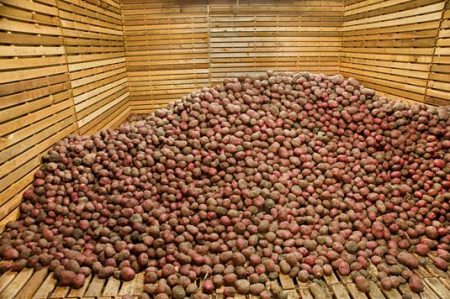
Potatoes are poured into bags in small batches. Tubers should also be in a small layer in the drawers, a distance must be left between the drawers to ensure ventilation.
In the porch
The way to store potatoes in the porch is worse than in the basement, but better than in the apartment. The temperature in the entrance is lower than in the apartment, so the harvest will be stored much longer. However, the disadvantages are temperature differences in the entrance (for example, with the beginning of the heating period), as well as the likelihood that the potatoes can simply be stolen.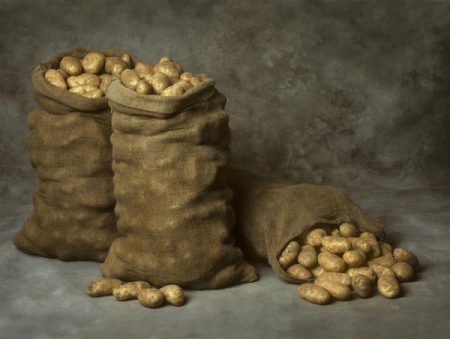
In the corridor
As a rule, there is dry air in the corridor. When stored under such conditions, potatoes can quickly begin to sprout and wilt. Therefore, to increase the level of humidity, you need to place a container of water near the potatoes.
On the balcony
If you need to keep the crop at home, but there is no cellar, then you can do this on the balcony or loggia. You can store in linen bags, nets, as well as boxes. But it is necessary to protect the potatoes from direct sunlight. If the balcony is not glazed, then the storage chest must be insulated from the inside with a thick layer of polystyrene and make ventilation holes.
In the fridge
For storage of vegetables, including potatoes, special containers are provided at the bottom of the refrigerator. It provides correct and long-term storage conditions. However, only a small amount of potatoes or young potatoes that are not procured for future use can be preserved.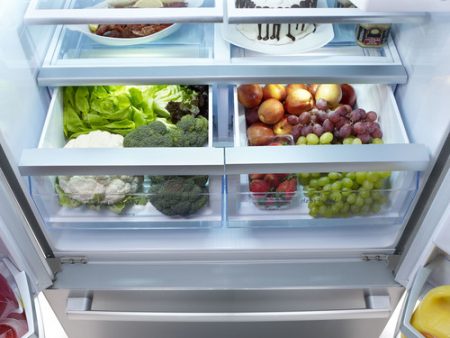
In the apartment
To properly store potatoes in an apartment, especially in summer, you need to place it in a dark, cool place. It can be a pantry, a place under a window sill or a sink. When storing potatoes under a sink, make sure that there is no increased humidity.
DIY potato box
If it is not possible to purchase containers for storing potatoes, then it is quite possible to make it yourself. The frame of the required size is made from wooden bars, the bars are fastened together by steel corners. Next, boards are nailed to the frame. There must be a distance between the boards to ensure that the tubers are ventilated.
Potato varieties that are best stored
Despite the prevailing opinion that early ripe varieties of potatoes are not stored for long, today breeders have bred varieties that are not only less susceptible to disease and have a high yield, but are also well stored. It is better to purchase varieties for winter storage, the average keeping quality of which is 90-95%.
Early ripe varieties:
“Bella Rosa” (“White Rose”) - the flesh is light yellow, the skin is pinkish in color, the starch content is average.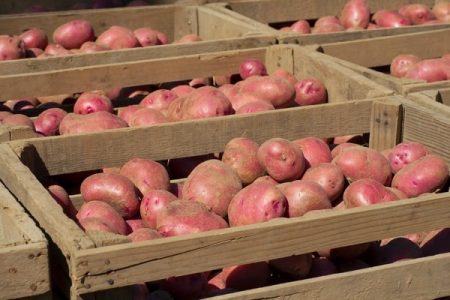
"Gala" - grown in most regions, the flesh is yellowish in color, the average starch content.
"Red Scarlet" - the peel is pink, the flesh is white or light yellow, the average content of starch.
“Lyubava” - pink peel, white flesh, starch content does not exceed 20%.
Mid-season grades:
"Nevsky" - medium-late, grown in all regions, creamy pulp, light yellow peel, starch content is negligible.
“Colombo” (“Colomba”) - medium early, yellow pulp, peel light yellow.
“Slav” - pink peel, creamy pulp, a little starch.
“Sineglazka” - pink peel with blue spots, white flesh, average starch content.
"Tuleevsky" - medium early, Russian selection, the tuber is yellowish, the flesh is yellowish.
Late:
"Ivan da Marya" ("Little Red Riding Hood") - a tuber yellowish with pink spots, creamy flesh.
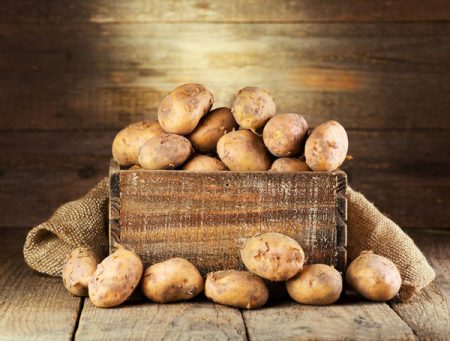
"Picasso" - creamy flesh, yellowish peel, medium starchiness.
Storage diseases
During storage, potato tubers are susceptible to diseases of fungal and bacterial origin.
Fungal diseases:
- late blight,
- scab,
- Fusarium
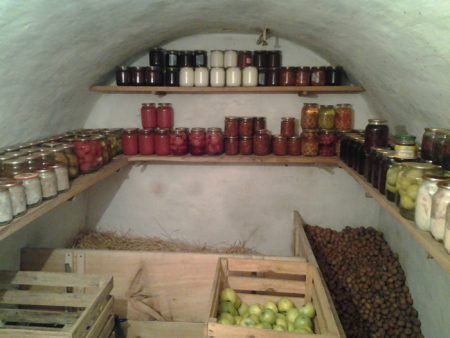
Bacterial diseases:
- blackleg,
- wet bacterial rot,
- common scab.
Methods of combating these diseases during the storage period of potatoes can only be compliance with optimal storage conditions and timely removal of spoiled, infected tubers. If the storage conditions are violated, the tubers can also deform, crack, choke, turn green, be affected by melanosis.
Reviews
Tatyana
I recommend in a container where potatoes are stored, put a few apples. They slow down the germination of potatoes.
Irina
So that the potatoes do not rot, I put ginger root in a box with potatoes.
Claudia Efimovna
Excessive moisture periodically appears in my cellar; potatoes are not very well stored. The usual beets, which I place next to the potatoes, help to fight it, spread it in a thin layer.




 Description and description of varieties in Belarus with a photo
Description and description of varieties in Belarus with a photo Do I need to pick flowers from potatoes: why do they do it
Do I need to pick flowers from potatoes: why do they do it When to dig potatoes: timing and availability of new potatoes
When to dig potatoes: timing and availability of new potatoes How to grow a good potato crop: various methods and methods, planting and care
How to grow a good potato crop: various methods and methods, planting and care